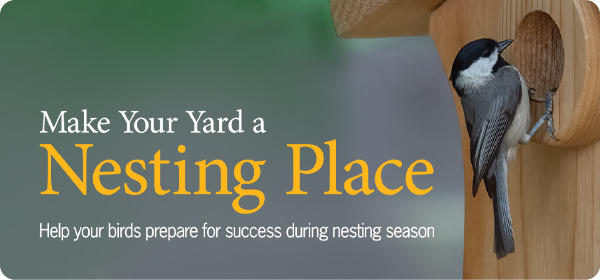Nesting boxes are important for birds in Spring
Help Your Birds Prepare for Nesting Season
Nesting season is upon us, and a new generation of birds will soon be entering the world. You can make a significant difference in how well these visitors survive and thrive.Wild birds are now looking for suitable nesting spots for the spring. With fewer hollow trees in cities and suburban yards, man-made nesting boxes help increase cavity-dwelling wild bird populations. Many people place nesting boxes in their backyards, hoping to house some of the many birds that would normally be looking for a hollow tree cavity. From the late 1800s to the 1960s, Eastern Bluebird populations declined almost 90% because of competition for nesting space. However, since 1966 the population has increased steadily each year, due to nesting boxes.
There are many different styles of nesting boxes, including decorative, functional and bird-specific. We recommend that a functional nesting box, should meet these seven requirements:
1) Designed for a specific species, according to its size and nesting requirements
2) Ventilation holes to prevent excess heat build-up
3) Easily cleaned
4) Easily mounted or hung
5) Durable to withstand several seasons of use
6) Drainage holes in the bottom of the house
7) NO perch below hole which allows predators to easily kill the babies.
Here are also a few things to do to get your existing boxes ready
- Make sure your nest box is clean, remove all old nesting material
- Check the ventilation in the top (usually where the roof meets the wall) and the drainage in the bottom (usually the four corners of the floor) to make sure they are unclogged and clean
- Make sure the mechanical moving parts of your box are working smoothly and intact.
- Check your mounting hardware to ensure it is stable and solid
- Make sure the door to clean your house is movable and that you have a way to check on the nest if you are monitoring it
It is entertaining and educational to watch birds as they go through the many stages of their lives, including choosing a nest site, making the nest, laying eggs, feeding their hatchlings, and then watching the fledglings as they venture out on their own.


